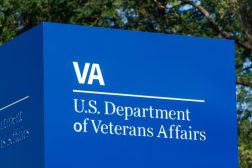 Overview of the Department of Veterans Affair’s IT best practices case study posted today on CIO.gov (complete report below).
Overview of the Department of Veterans Affair’s IT best practices case study posted today on CIO.gov (complete report below).
The problem
Earlier this year, President Obama signed the Post-9/11 Veterans Educational Assistance Improvements Act of 2010 that extended educational benefits for military enlisted on 9/11 or after.
The challenge
As the second largest federal agency, Veterans Affairs has many governance structures that can usually be redundant as is the case with allocating the resources for this bill. Many of the processes required 60 to 90 days for decisions or were serial gated processes. With less than nine months to develop and implement a solution to pay claimants under the new law, any delay in decision-making could cause a day-for-day slip in the schedule.
The solution
To address the governance structure, Veterans Benefits Administration and Office of Information and Technology created an integrated governance structure. This new structure has three tiers: Joint Executive Board (JEB), Executive Steering Committee (ESC) and the Working Group (WG or IPT). Within this structure, the WG identifies processes that pose a risk to the program’s success, whether that is because of its redundant nature or extended time frames. If such a risk is identified, it is documented along with a proposal for which actions should be taken and put forward for decision. The groups also met frequently to stop for any lapse in processes.
Results
The aforementioned success factors were successfully implemented and continue to function through VA’s current development efforts. As a result of this integrated governance structure, the Automate GI Bill Benefit Initiative has eliminated redundant processes, expedites and executes processes quickly, and empowers IPT members to make and execute decisions.
Lessons learned
- Quickly create and utilize an integrated governance structure and ensure the active stakeholders embrace it as part of the organizational culture.
- Senior Executive participation and the “Red Flag” process increase chances for success and help to avoid last minute failures.
- Maintain constant and consistent stakeholder involvement through meetings and co-location (this is especially important during planning stages).
- Using agile and iterative development/deployment processes allows for greater customer involvement, ownership, and visibility.
- Every project cannot be the number one priority; prioritization and setting expectations are still essential.
Full report:






